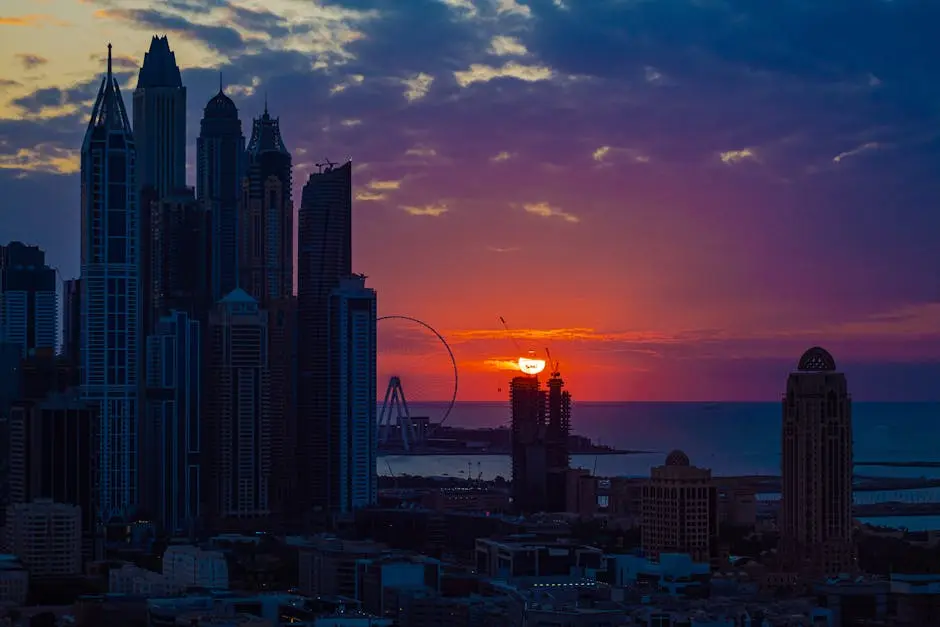In this blog, we will delve into the rich cultural differences and unique lifestyles found in Dubai and Sweden. Both regions boast fascinating histories, traditions, and contemporary achievements that shape the daily lives of their residents. Join me as we explore these diverse cultures, from social norms to culinary delights, and discover what makes each destination truly special.
A Brief Overview of Dubai and Sweden
Dubai, a jewel in the heart of the desert, represents modernity and ambition. Known for its towering skyscrapers like the Burj Khalifa, the city is a global hub for business and tourism. Life in Dubai is fast-paced and constantly evolving, reflecting a blend of cultures from around the world. The UAE, of which Dubai is a part, has rapidly transformed from a modest fishing village into a vibrant metropolis, showcasing remarkable achievements in various sectors, including technology, hospitality, and retail.
In contrast, Sweden embraces a more tranquil and nature-centric lifestyle. With its picturesque landscapes, encompassing everything from lush forests to archipelagos, Sweden captivates its residents and visitors alike with its commitment to sustainability and wellbeing. The country’s rich history, marked by Viking heritage, coupled with its modern achievements in education and equality, presents a fascinating narrative. Whether it’s through innovation in environmental practices or advancements in social welfare, Sweden’s culture is deeply rooted in an appreciation for both tradition and progress.
Tourism plays a significant role in both Dubai and Sweden, albeit in different forms. While Dubai attracts millions with its luxurious offerings and extravagant attractions, Sweden draws visitors with a serene experience, emphasizing the beauty of its natural landscapes and cultural historical sites. Both destinations provide travelers with unique experiences, enhancing their understanding of varied lifestyles through exploration.
Social Etiquette: Understanding the Norms
Social etiquette in Dubai is heavily influenced by Islamic traditions and values. As a melting pot of cultures, it is essential to understand and respect the local customs. For instance, greetings are often conducted with warmth, and a firm handshake is common. However, maintaining a respectful distance is vital, especially between genders. Furthermore, during Ramadan, it is important to observe fasting practices and refrain from public displays of eating or drinking, showcasing respect for local traditions.
On the other hand, social norms in Sweden center around egalitarianism and mutual respect. The Swedes are known for their informal approach, with the concept of ‘lagom,’ meaning just the right amount, suffusing their interactions. It’s common to address individuals by their first names, regardless of status, emphasizing equality. Meetings often include discussions that welcome everyone’s opinions, promoting a culture of open communication and collaboration. This friendly attitude fosters a sense of belonging and acceptance.
Additionally, while swearing and casual language can be tolerated in Sweden, they are typically avoided in professional settings in Dubai. Here, maintaining a professional demeanor is paramount, reflecting the importance of reputation in the business realm. This fundamental difference in social etiquette underscores the distinctive way each culture interacts and engages with one another.
Culinary Delights: Food and Traditions
Food in Dubai is an exquisite amalgamation of flavors, reflecting its multicultural population. From traditional Emirati dishes like Al Harees and Shawarma to global cuisines found in bustling food markets, the culinary landscape is rich and varied. A meal in Dubai often serves as a social gathering, where families and friends come together to share their food and culture. The dining experience here is not merely a necessity but a celebration of life, with elaborate feasts being essential during holidays and special occasions.
Contrastingly, Swedish cuisine places emphasis on fresh, local ingredients and simplicity. Traditional dishes such as meatballs, herring, and crispbread tell the story of Sweden’s agricultural heritage. The concept of ‘fika,’ a coffee break often enjoyed with pastries, highlights the importance of taking time to connect with one another over food. It reflects Sweden’s belief in balancing work and leisure while cherishing moments spent with loved ones.
Furthermore, the festive season brings unique culinary traditions to both cultures. In Dubai, the extravagant Iftar meals during Ramadan are full of sweets and suckling lamb, while Sweden celebrates with julbord, a traditional Christmas buffet featuring pickled herring, pork, and an array of desserts. These cultural nuances illustrate how food not only nourishes the body but also nourishes community and tradition.
Festivals and Celebrations: A Cultural Comparison
Dubai boasts a calendar packed with colorful festivals and events. The Dubai Shopping Festival, held annually, draws thousands from around the globe, celebrating not only shopping but also cultural performances, food, and entertainment. Another prominent event, Eid Al Fitr, marks the end of Ramadan with grand celebrations that resonate with joy and community spirit. These gatherings highlight Dubai’s enthusiasm for life and its commitment to bringing people together despite their differences.
Swedish festivals take on a different yet equally vibrant tone. Midsummer, one of the most celebrated occasions, involves dancing around a maypole and feasting on herring, new potatoes, and strawberries. It showcases Sweden’s connection to nature and the arrival of summer. Furthermore, Lucia, celebrated in December, honors the light amidst winter darkness, symbolizing hope and unity. These festivals underscore the strong ties to tradition and the importance of community in Sweden.
Although both Dubai and Sweden have their unique celebrations, they share an underlying theme of unity and togetherness. Both cultures emphasize the importance of family and friends, using festivals as a way to strengthen bonds and foster connections. This cultural comparison highlights the universal human desire to celebrate life, irrespective of geographical borders.
The Role of Architecture in Defining Culture
Architecture in Dubai is a testament to its rapid development and ambition. Skyscrapers that scrape the sky reflect modern design philosophies and an unyielding quest for innovation. The Burj Khalifa, standing tall at over 828 meters, symbolizes not only the city but also the dreams of those who reside within it. The cityscape is a fusion of contemporary and traditional styles, where ancient mosques coexist alongside futuristic designs, showcasing the harmonious blend of the past and present.
In contrast, Swedish architecture often draws from nature and simplicity. The traditional red wooden houses, known as ‘falu rödfärg,’ are seen dotting the landscapes and speak to the country’s farming heritage. Cities like Stockholm showcase a beautiful mix of classical architecture infused with modern design, reflecting Sweden’s innovative spirit while honoring its historical roots. The emphasis on sustainability is also evident, with many new constructions designed with eco-friendly materials, underscoring a cultural commitment to preserving the environment.
Furthermore, public spaces in both cultures are designed to foster community engagement. Parks and recreational areas in Sweden are meticulously curated to encourage outdoor activities, reinforcing the connection to nature. Meanwhile, Dubai’s vibrant public squares and promenades invite social gatherings, blending culture with urban life. This architectural approach highlights how both places utilize design to enhance cultural experiences while fostering connections between individuals.
Leisure Activities: How People Spend Their Time
In Dubai, leisure activities are abundant and embrace a more extravagant lifestyle. From indoor skiing in the Mall of the Emirates to enjoying luxurious beach clubs along the coastline, the options seem endless. Residents often indulge in high-end dining experiences at lavish restaurants offering a taste of international cuisine. The nightlife, vibrant and diverse, features various clubs and entertainment venues that reflect the cosmopolitan spirit of the city. Activities such as desert safaris and yacht trips further enhance the adventurous side of life in Dubai.
Conversely, leisure in Sweden tends to be more relaxed and nature-oriented. Swedes often take advantage of their stunning landscapes by hiking, cycling, or enjoying time on the water during summer. The concept of ‘allemansrätten,’ or the right to roam freely in nature, encourages people to explore the outdoors. Social life is often centered around casual gatherings, with evenings spent around bonfires or picnics. This emphasis on nature and community provides a refreshing contrast to the fast-paced leisure activities found in Dubai.
Moreover, the approach to leisure activities in both cultures reflects broader societal values. In Dubai, the focus is on luxury, showcasing success and wealth, while in Sweden, leisure is often synonymous with simplicity and connection to nature. Embracing both approaches, we can appreciate how leisure activities play a crucial role in bringing people together, enriching their lives, and creating cherished memories.
Nature and Urban Landscapes: A Contrast
The contrasts between nature and urban landscapes in Dubai and Sweden are striking. Dubai’s skyline is punctuated by impressive skyscrapers and innovation, yet it’s easy to escape the urban environment with nearby desert landscapes. The juxtaposition of luxurious shopping malls against serene camel rides accentuates the diverse experiences available to residents and visitors alike. The rapid development has created a unique relationship between nature and urban life in Dubai, where green spaces are thoughtfully integrated amidst the bustling city.
In Sweden, nature is an inherent part of daily life. The population enjoys intimate connections with their surroundings, as forests and lakes are easily accessible. Urban areas are designed with this in mind, often incorporating parks and nature trails within city limits. This focus on green spaces reflects a national dedication to sustainability and well-being, making residents feel more connected to nature. The natural beauty surrounding cities like Stockholm is celebrated through various outdoor activities, peacefully blending urban life with Mother Nature.
Ultimately, both Dubai and Sweden offer distinctive experiences rooted in their geographical attributes. While Dubai showcases a rapid blend of urban sophistication and desert expanses, Sweden’s landscapes are a reminder of the tranquility found in nature. This rich contrast lays the groundwork for different cultural experiences, emphasizing the importance of both architectural innovation and environmental appreciation.
Celebrating Diversity in Cultural Experiences
Ultimately, both Dubai and Sweden present captivating cultural experiences that reflect their respective histories, values, and environments. Whether it’s the fast-paced, vibrant life of Dubai or the serene, nature-oriented lifestyle of Sweden, each culture has its own charm that resonates with people from all walks of life.

